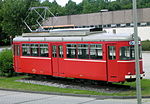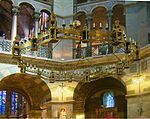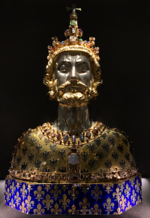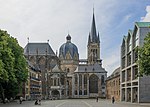Aachen Cathedral Treasury
Aachen Cathedral TreasuryReligious museums in GermanyWorld Heritage Sites in Germany

The Aachen Cathedral Treasury (German: Aachener Domschatzkammer) is a museum of the Roman Catholic Diocese of Aachen under the control of the cathedral chapter, which houses one of the most important collections of medieval church artworks in Europe. In 1978, the Aachen Cathedral Treasury, along with Aachen Cathedral, was the first monument on German soil to be entered in the List of UNESCO World Heritage Sites. The treasury contains works from Late Antique, Carolingian, Ottonian, Staufen, and Gothic times. The exhibits are displayed in premises connected to the cathedral cloisters.
Excerpt from the Wikipedia article Aachen Cathedral Treasury (License: CC BY-SA 3.0, Authors, Images).Aachen Cathedral Treasury
Johannes-Paul-II.-Straße, Aachen Burtscheid (Aachen-Mitte)
Geographical coordinates (GPS) Address Phone number Website External links Nearby Places Show on map
Geographical coordinates (GPS)
| Latitude | Longitude |
|---|---|
| N 50.775036111111 ° | E 6.0828166666667 ° |
Address
Domschatzkammer
Johannes-Paul-II.-Straße
52062 Aachen, Burtscheid (Aachen-Mitte)
North Rhine-Westphalia, Germany
Open on Google Maps









